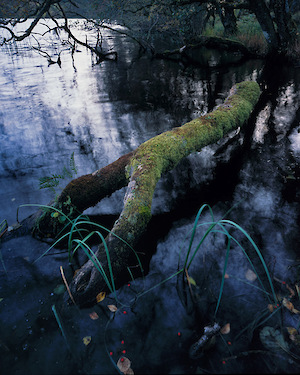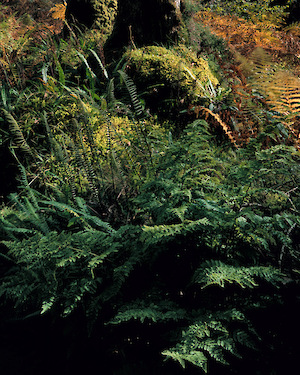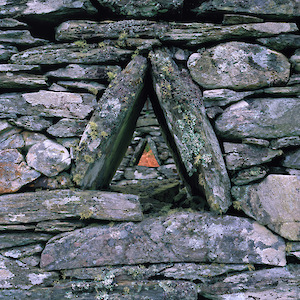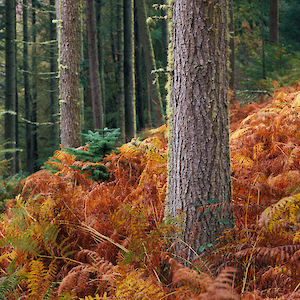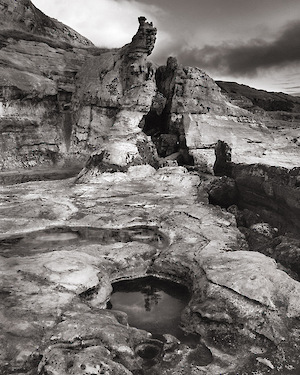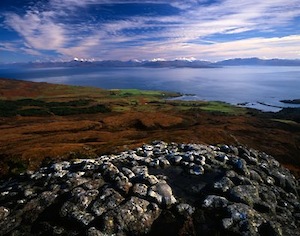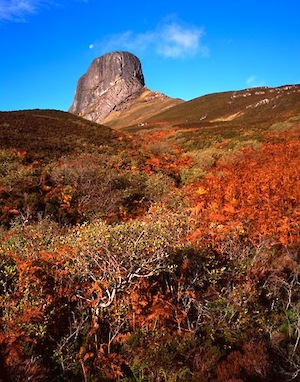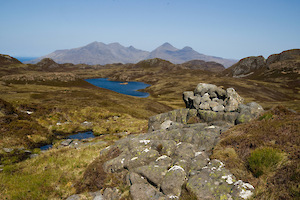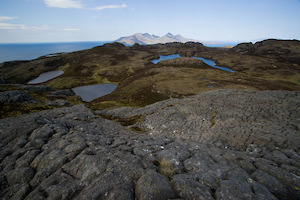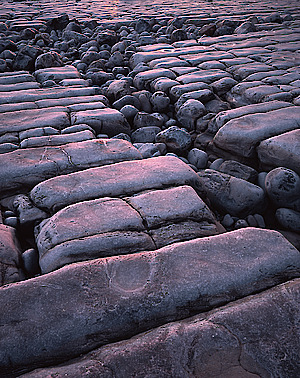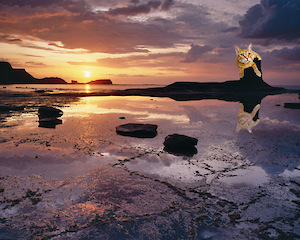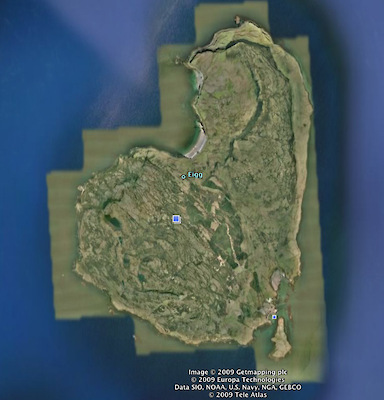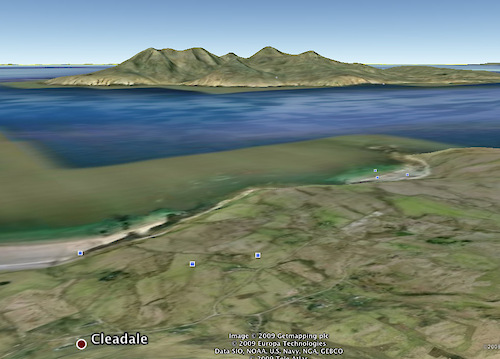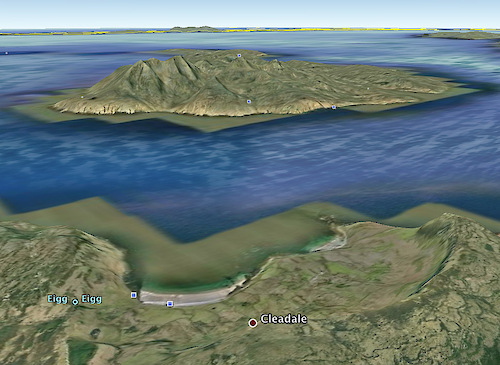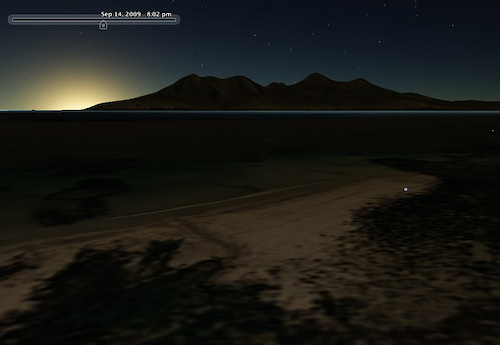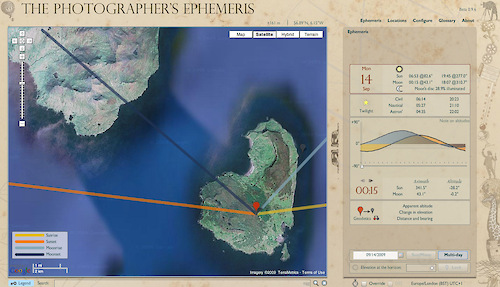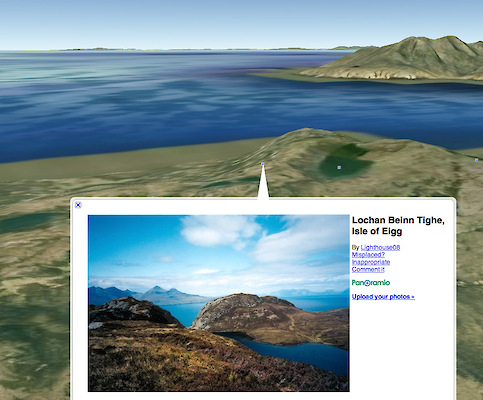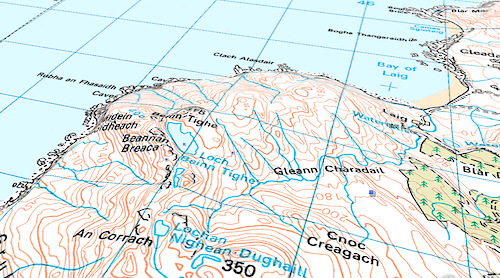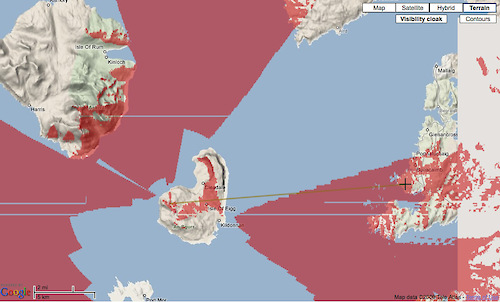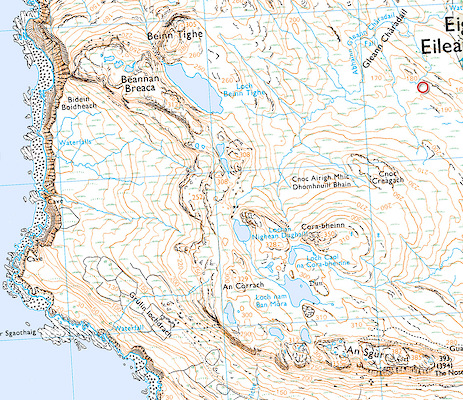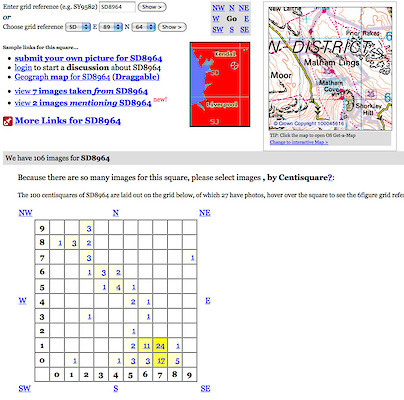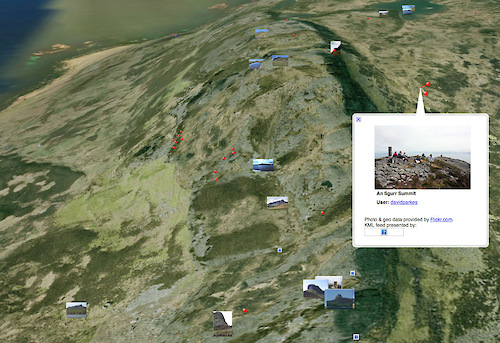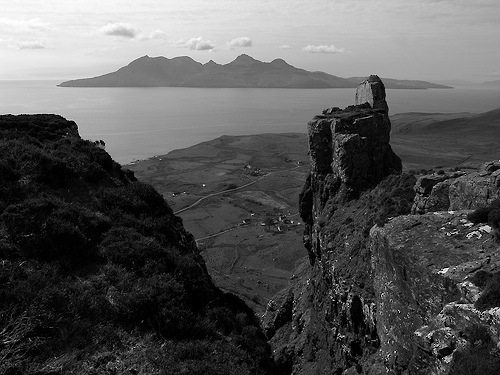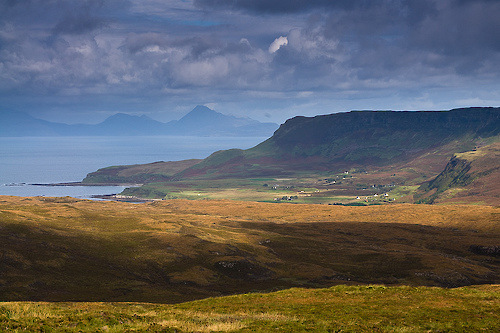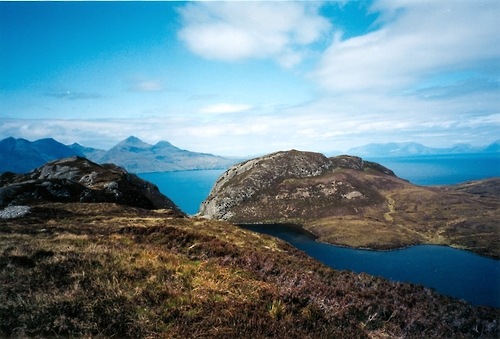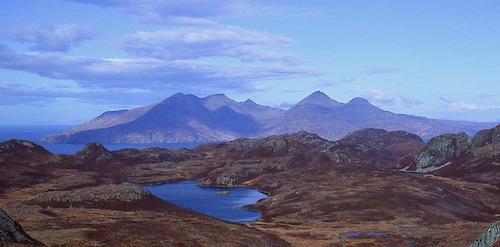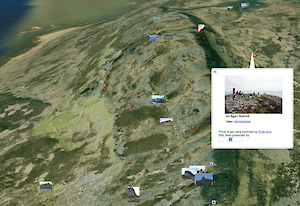Take a View, the landscape photographer of the year competition. Well, what a pickle. I was (and still am) in two minds about posting anything about this competition as I have a personal relationship with Charlie Waite who is at the heart of it but as I’ve already put my views to him and am talking about the competition on Twitter and in person, I thought it would be hypocritical of me to balk at saying something just because the audience is different.
Firstly a little bit of background, I entered Take a View last year and submitted ten pictures, four of which were accepted to go through to the final round. Out of these four, one picture was highly commended and ended up in the book and at the exhibition in London. At the time I was reticent about entering mainly because it was a competition and I didn’t like the idea of being judged without really knowing what the criteria were. However, with Charlie being at the heart of the competition, I hoped for the best. The picture that was chosen wasn’t my favourite but I was quite pleased with it and I thought I understood why it was chosen above my other pictures. After checking, I realised that the majority of people judging the pictures were not photographers or photography critics and hence the results were being chosen for a variety of reasons, not necessarily because of the quality of the photograph itself.
This year I’ve been excluded from entering the competition because I am working for one of the organisers. This was sort of a releif as it meant that I didn’t have to decide whether to enter or not. Quite a few colleagues of mine entered however, including people I greatly admire such as Dav Thomas, .. However, only one of these photographers got anything through to the last round and that one only got a picture through that, whilst well caught, doesn’t represent the best photograph out of his submissions (It’s a very bold rainbow picture over a long exposure sea horizon by Jason Theaker which, whilst very stunning and deserves recognition, is one which I am sure he will agree is 98% eye candy).
This didn’t surprise me completely as having looked at the entries from last year, I started to realise that this is more about wow! and ooh! than about photography. i.e. it’s beginning to resemble one of the powerpoint slideshows of images that make the rounds of unfortunate inboxes all the world over. And this shouldn’t really be a problem, after all there are competitions all over the place and anybody can start one and choose whatever pictures they like…
.. apart from the fact that the competition is called “Landscape Photographer of the Year” and is run by one of the foremost landscape photographers in Britain.
Let me backtrack a little to one of the reasons I started to take photography so seriously.
In the US, Australia and New Zealand, landscape photography is considered an art form and forms a part of the whole structure of photography. In America Edward Steichen, Alfred Stieglitz, Ansel Adams, Walker Evans, Paul Strand, Timothy O’Sullivan, Edward Weston, Robert Adams, the list goes on.. landscape photography is at the heart of the nation and has been influential in the structure of the country. In Australia Frank Hurley set the scene and Peter Dombrovskis took it to a new level and changed Tasmanian history in the process.
The UK however, landscape photography has some cachet but it is nowhere near the level of respect that it deserves. We have some historic figures such as the historic founders of our photographic tradition and later on Fay Godwin. However, the art establishment has created an environment where you have to create deadpan, unsaturated pictures; an environment where Simon Norfolk, Jem Southam, Stephen Vaughan et al are acceptable but David Ward, Joe Cornish and Charlie Waite aren’t (I mention Jem, Simon and Stephen because I like their work). But it’s even worse than this in that the general public see photography as ‘easy’ and don’t appreciate that there is anything more involved in creating a ‘great’ landscape photograph beyond knowing how to use a camera, getting to a nice place and being lucky with the weather!
So … what does this have to do with Landscape Photographer of the Year? Well … Given that Charlie is one of the best photographers that Britain has had and that he has a competition called ‘Landscape Photographer of the Year’, the winner should be the best landscape photographer from that year? Here are a few of the preview news items for you to browse..
Well – do the results work for me and the people I have talked to? No.. Not really.. Some do show the requisite levels of competence in the craft of photography and also show skill in composition and even creative originality (Particularly Alex Nail, Ian Cameron, John Parminter, Anthony Brawley, Keith Naylor and Jason Theaker). But those are the exceptions..
Try to imagine the pictures that you have seen on the newspapers preview sites sitting alongside the photographs in “World’s Top Landscape Photographers”? No, I can’t either.. Perhaps the four I’ve mentioned (although they have better photographs in their portfolios and I imagine, and in some cases know, that they entered). Lowlights including a picture of a Hermit crab with a photoshop’d reflection and a new sky by the looks of it (see Crabgate on Flickr); more animals (cute or not); a particularly bad HDR that won a category; The Bregagh Road beech trees, Buachaille Etive Mor, Sycamore Gap, Mist at Corfe Castle – these are great locations, not necessarily the result of great photographers;
So.. now I’ve finished sounding like a complete miserable git and slagging off everything in site, what suggestions do I have? Well… for one the competition should probably be called “Landscape Photograph of the Year” or better still “Britain’s Best Views, 2009”. My primary concern is that the ‘Landscape Photographer of the Year’ is judged by a panel with vested interests in things other than photography and is judged on a single picture. The result will very unlikely be taken by the best landscape photographer. Just to get this clear, I have no problems with the competition itself, there is nothing inherently wrong with it. What is wrong is the public perception that this represents the best that landscape photography has to offer in the UK, a perception that I took to be true when I initially entered.
And what can you do about it? Well.. I’m not going to recommend not entering, that would be wrong. But you should know what you are doing when and if you enter next year. Be aware of what the competition is and what it means and don’t get caught up in the myth that the results mean anything any more than that you have won or lost a competition.
For me, I intend to do my best to ensure that next year there is –
-
a competition that is run by British landscape photographers, for British landscape photographers.
-
a competition that conforms to a broad but generally accepted definition of what landscape photography is about.
-
a competition that is judged by a portfolio of images.
I don’t know how to best achieve this yet but I promise it will happen…
I would like to know what people feel about this. Is my point of view irrelevant?
I’d also like any of your ideas on how you think a competition like this should be judged and what criteria are important.
I would really like to stress that this is not intended as a ‘bash Charlie’ post. Charlie has created a hunger for landscape photography in the country and for that he should be applauded. He’s also a friend with whom I have spoken about these issues previously.
Finally – here are some of the notes I made whilst looking through all of the pictures that we’ve seen so far in the press
The Great
Ian Cameron , Crimson Chill– very nice in many ways, strong composition, good light, original location.. (oh and the family tree is good too)
John Parminter, Buachaille Etive Mor – despite the commonly captured subject taking a lead, the execution, composition and light are excellent.
Anthony Brawley, Loch Dochard – A great find and wonderfully captured. Strong composition, complementary weather.
Keith Naylor, Herringfleet Mist – If you want a picture of a windmill at sunset, this is pretty damn good..
The Very Good
Pete Bridgewood, Great minimal work, very Pete Bridgewood and a nice continuation on a theme.
Jason Theaker, Elemental Metamorphosis. A well captured photograph that simplified the rainbow into something more primal (if over processed slightly by my tastes)
Alex Nail, Burrator plantation – great shot, great composition, great light… very nice indeed and a rare capture..
The OK
Nigel Hiller, Hebden Bridge – wonderful light and a good composition.
Nicky Stewart‘s Lighthouse – Very competent, dramatic photograph. Not sure it’s world class though..
Claire Carter‘s snowdonia. Great light well captured with a reasonable composition.
Mike Hughes, Loch Ossian – Atmospheric but doesn’t keep my attention
Paul Knight – Good black and white composition well toned.
Don Bishop, Hoar Frost – Well taken but not particularly moving
Anthony Burch, Old Bathing Place – A nice scene but not particularly resolved composition
Alan Cameron, boats and reeds – a beautiful picture if a little cliched..
Mark Lakeman, Binary Code – I like this. The idea is strong but it misses slightly in execution – almost great though
The Rest
overall winner, Storr – competently captured but badly processed. Relies on lucky weather and a location based cliche (i.e. The location is more important than the composition and it has also been done better before). What is going on with the horizon and the big lump of rock on the right?
John Parminter’s Your View – a good shot but a cliche perhaps?
National Park Winner – Bad HDR on an average composition but with some nice light
Peter Cox, Dark Hedges – is this going to be a winner every year?
Graham Hobbs, Kingston Lacy – The hulk rides a bike down a cliched location..
A cliched shot of the lit up tent at sunset.. nice but not landscape photographer of the year really..
Horse Pictures, Dog Pictures, Documentary pictures of runners, urban architecture pictures?
Tim Morland, South Downs – it’s a nice picture but it doesn’t do a lot for me.
Dartmoor national park picture by Adam Burton.. nice sky – not really much of a composition (and over polarised IMO)
North Yorks Moor winner – some nice light and a cross .. hmm
Sycamore gap?? Oh please!!! Stock photography? yes! Landscape photographer of the year? No!
Mist at Corfe Castle – another standard that I’ve seen done better. At least it’s a competent photograph with good atmosphere.
The crab – oh dear. Please see my flickr page for details..
The poppies by Bungh Huynh are competent again but far from an inspiring example of the best of british photography..
UPDATE : The topic has also been discussed at the flickr landscape composition group and at the large format photography forum and a non-photographic viewpoint over at The UK Climbing Forums
Click to view full post including 38 Comments
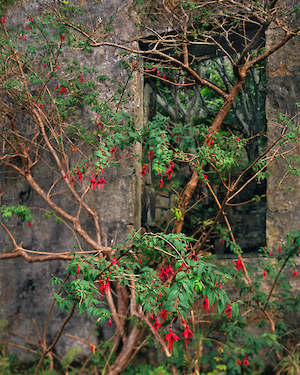
 (good job!) The results of this batch can be seen in the sidebar (click to see larger images).
(good job!) The results of this batch can be seen in the sidebar (click to see larger images).
